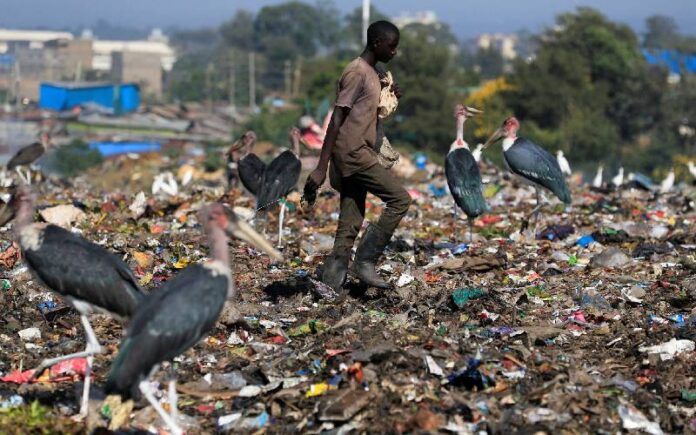By Henry Owino
Nairobi, Kenya: Kenya’s efforts to mitigate environmental waste cannot be overdramatized or exaggerated. The evidence is based on various innovations and technologies transforming waste materials into new resources within a loop and without losing anything.
Environmental waste is unwarranted disposal of mass or energy into earth’s natural resource pool such as water, land and air that results in long- or short-term detriment to the atmosphere and its ecological health to negatively impact the living beings and their life both quantitatively and qualitatively.
Being a very broad topic, we narrow this down to focus specifically on organic waste or wet solid waste matter and its effects on the atmosphere.

Therefore, organic waste is any material that is biodegradable and comes from either a plant or an animal. Biodegradable waste is organic material that can be broken into carbon dioxide, methane or simple organic molecules.
The simplest types of organic molecules are hydrocarbons, compounds that contain only hydrogen and carbon atoms. However, most organic molecules contain other elements, such as oxygen, nitrogen, sulfur, and phosphorus among others which are essential nutrients for plants or crops.
It is estimated that Kenya generates between 3,000 to 4,000 tons of waste per day, the majority of which originates from urban areas. According to the World Bank, the country’s capital, Nairobi generates between 2,000 to 2,500 tons of waste daily, of which 80% is organic and 20% is in plastic form.
Majority of these waste collected end up in dumpsite with very minimal recovery if any through recycling, reusing or transformed into a form which can yield an economic or ecological benefit. The major setback here is poor waste management, coupled with rising urban pressure which have heightened the risks of environmental degradation especially in the capital city of close to 6 million inhabitants.
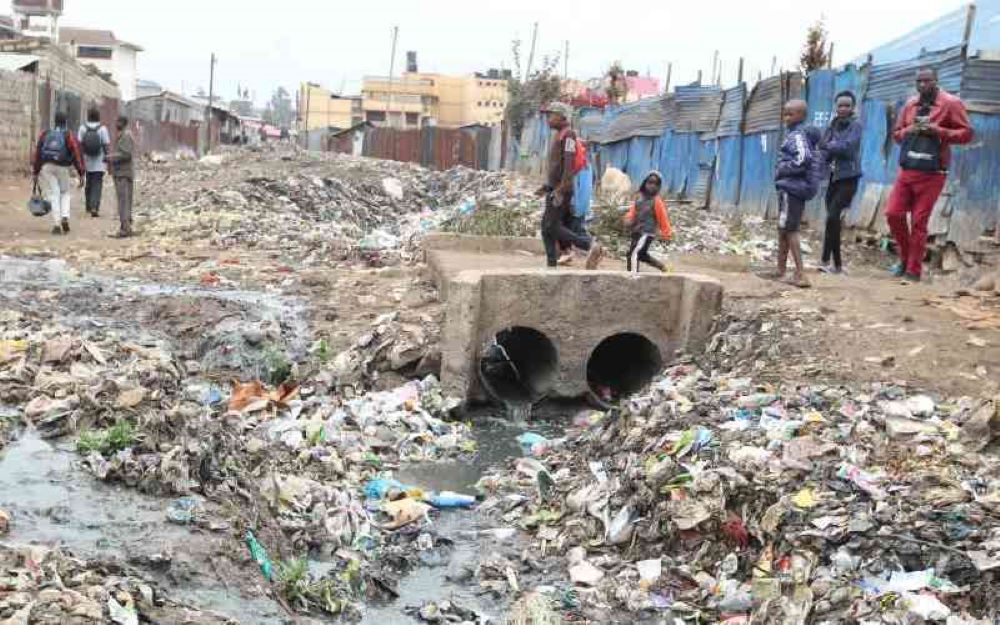 Waste Management Procedure
Waste Management Procedure
The introduction of the Sustainable Waste Management Act, 2022 under the Ministry of Environment and Forestry in Kenya is currently changing the situation. The National Environment Management Authority (NEMA) has been mandated to oversee its implementation to the letter either through stick or carrot.
Dr. Ayub Macharia, Director NEMA who is also in charge of Environmental Education and Awareness says Kenya’s Constitution 2010, devolves waste management as a function of the County Governments. So, the 47 counties in Kenya led by governors are responsible for waste in their counties.
Dr. Macharia clarifies that NEMA is in charge of national policy formulation and coordination to ensure the system is running and counties are functioning. This should be consistent with the new law on sustainable waste management.
“The Sustainable Waste Management Act, 2022, requires NEMA to generate waste that is not contaminated from homes, estates, offices, markets, learning institutions among others. The waste should be separated into organics and dry synthetics in at least two distinct litter bins for collections and disposal not at dumpsite but to recyclers,” Dr Macharia explained.
Therefore, Environmental Waste Management is the process of handling and disposing of waste safely. The waste should be sorted right from its originating source before pickers or collectors transport it to the recycling companies.
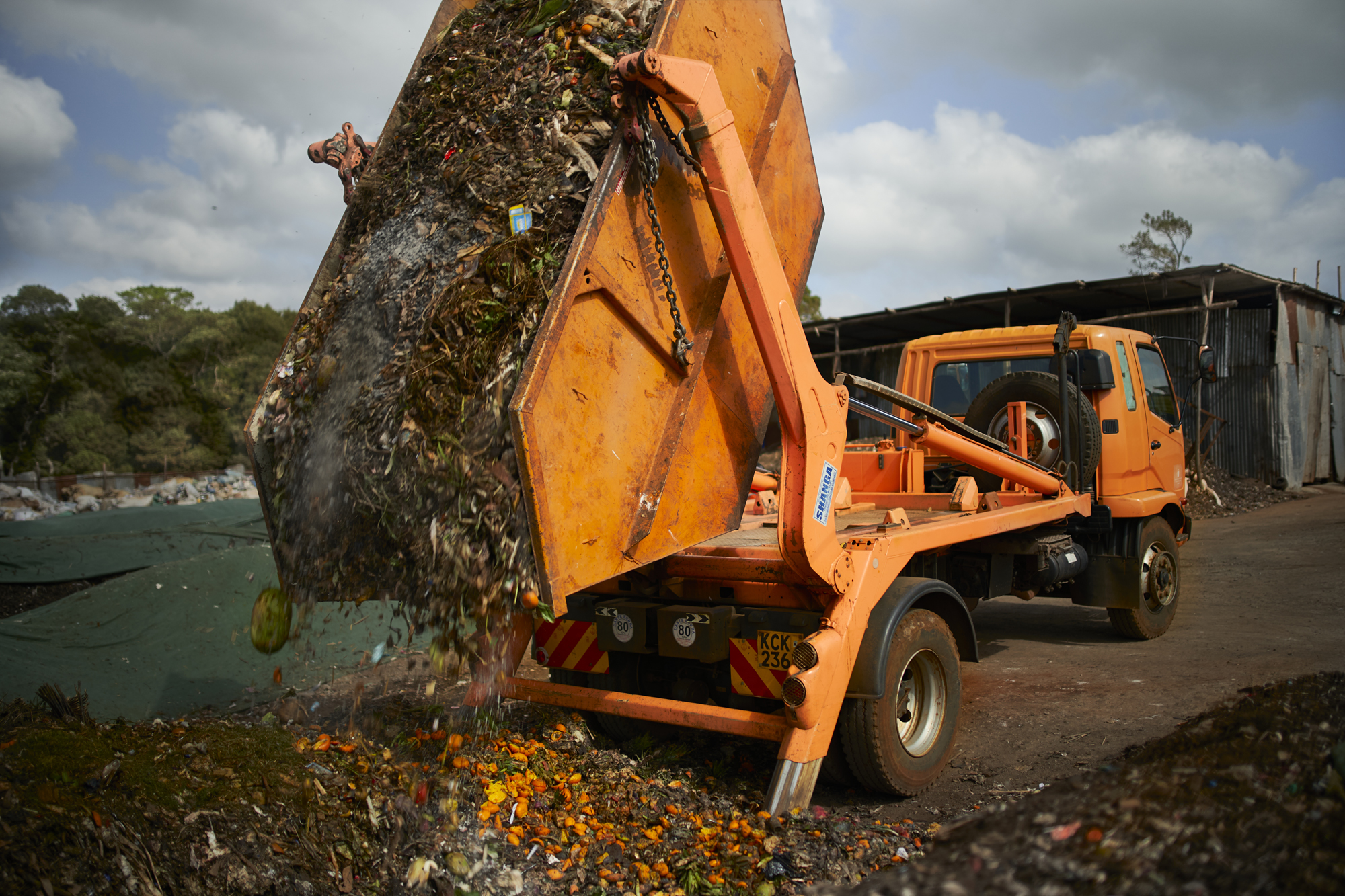
Private Sector organizations in Kenya are at the forefront in implementing this new law by actually practicing it in various counties. It has since been known as a circular economy model where resources are managed instead of managing waste.
Loss and Waste Management in Supply Chain
According to Winnie Yegon, Food Systems Analyst, Food and Agriculture Organization (FAO), to grasp the issue of food waste, it’s important to understand it from a supply chain perspective. From production and packaging to distribution to retail and to the consumer. Food waste occurs on every level of the supply chain, and with chains growing longer by the year, waste increases in every stage.
Yegon says food loss and waste are distinct but that food that is intended for human consumption and ultimately it wasn’t consumed.
Food “loss” occurs before the food reaches the consumer as a result of issues in the production, storage, processing, and distribution phases. Food “waste” refers to food that is fit for consumption but consciously discarded at the retail or consumption phases.
“The difference between food loss and waste is where it occurs in the value chains, that is actions it takes right from the farm up to the disposal of the food. For instance, from farm to retail is known as food loss while from retail to the final consumer level is what is termed as food waste,” Yegon explained.

And if food goes to the landfill and rots, it produces methane—a greenhouse gas even more potent than carbon dioxide. She said about 8% -10% of all human-caused greenhouse gas emissions could be reduced if we stop wasting food.
In Kenya, the food loss and waste are between 30% to 40% which is not consumed hence detrimental to the environment. It has been said and published that food we waste globally could actually feed up to 2 billion hungry people.
Dr. Christopher Mutungi, Senior Researcher, Food Program at World Resources Institute (WRI) says when food goes to the dumpsites as waste, it is responsible for 8% to 10%of greenhouse gasses, specifically methane.
Dr. Mutungi discloses that presently, the Food Safety Management System (FSMS) requires companies not just to be certified in terms of safety and quality of their products but on policies and mechanisms that they have in order to reduce food loss and waste within their supply chain.
“This policy requires companies to audit themselves. For instance, Brookside, Kakuzi just to mention but a few companies by April 2024, must review their systems and demonstrate that they are actually reducing food loss and waste within their food supply chain,” Dr. Mutungi revealed.
This new policy is not just within the company alone but it has to reach out down to the farmers as well, the company it is working with.

For small scale farmers or small and medium enterprises (SMEs) are encouraged to enter into food processing techniques and decamp from relying on primary production to minimize loss and waste. It is also the best way to control glut in some areas for supply to other parts of the country with severe shortage.
Turning Organic Waste into Resources
Taka Taka Solutions is one such private organization regenerating organic and plastic waste into new resources. Organic waste being the highest wet solid matter disposed of from various premises, emits between 8% to 10% of methane- a greenhouse gas responsible for climate change.
According to Dr. Macharia, Nairobi County alone generates approximately 3000 tons of waste daily of which 1,800 tons (60%) are organic waste while about 1,200 tons (30%) are dry synthetic waste. The data may vary a little bit but the facts remain the same that organic waste are just too much in Nairobi.
It is for this reason that I sorted to know how Taka Taka Solutions company is turning the high volume of organic waste in the capital city into a beneficial resource.
According to Joharie Kisiangani, Marketing Representative at Taka Taka Solutions (‘Takataka’ means ‘waste’ in Kiswahili), since its inception in 2011 it has developed to become the largest waste management company in Kenya. The organization now serves more than 20,000 households and handles 70 tons of waste per day.

Kisiangani says the organization operates; a composting facility, three sorting sites, a recycling plant, and two waste buy-back centers. With over 400 employees directly earning their livelihoods from the company and at least 1000 waste pickers its rate of separation and recycling is over 90%, which is one of the highest recycling rates in the world.
“TakaTaka Solutions is an integrated waste management and recycling approach which has today become a state-of-the-art waste management value chain. It is a full circular economy from providing much needed services to creating jobs,” Kisiangani affirms.
Thus, TakaTaka Solutions is a Kenyan waste management company active in five aspects of waste management; waste collection, sorting, composting, plastic recycling, and buying back waste from waste pickers.
Every day the company fleet of trucks drives out collecting up to 60 tons of waste daily from residentials, industrial and commercial clients. This is in addition to sourcing 30 tons from six waste pickers at its buyback centers across the country. The organic waste is then taken through various processes turning them into organic fertilizers targeting smallholder farmers.
To effectively make the operation succeed, the company is partnering with rural households, apartments, businesses such as malls, schools, hotels, retail- shops, industries, recyclers industries, local plastic manufacturers, farmers both small and large-scale, urban households, and waste pickers to collect and deliver the new resources.
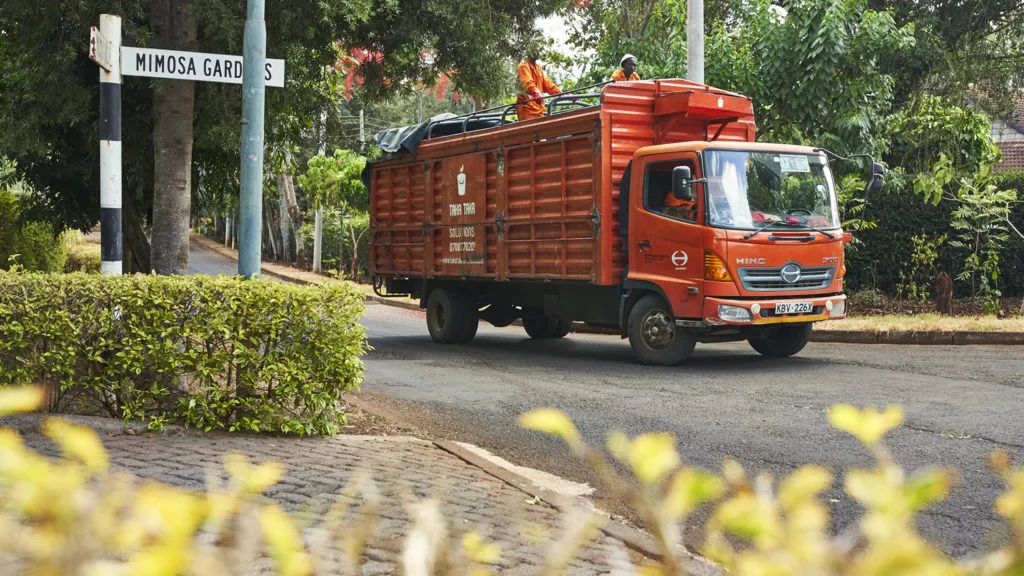
According to Kisiangani, the two most common ways to process organic waste sustainably are composting and anaerobic digestion. Composting is a simpler and cheaper process in terms of sustainable financing and policy models for municipal composting.
“Our waste collection service is for any type of waste producer, while sorted recyclables are used by third-party recycling industries. Processed plastic materials are used by local plastic manufacturers to make new plastic products. And the compost is used by Kenyan farmers to improve their soil fertility and we also sell compost to urban households practicing kitchen gardens,” Kisiangani explains.
Tractor working on organic waste Solutions, aims to transform Kenya’s organic and plastic waste value chain for good. In addition, the project ensures a second life for 95% of waste collected directly from Nairobi households and businesses.
Dr. Macharia affirms that recovery of food loss and waste led by private companies is helping in reduction of organic waste. For instance, in Nairobi County, it has been at Dandora, Kisumu County at Kachok, Nakuru County at Giotto dumping site while Mombasa at Mwakirunge garbage dump just to mention but a few.
As a result, the Ministry of Environment and Forestry estimates that by 2040, there will be no dumpsites and thus complete reduction of methane emission into the atmosphere hence minimizing global warming.

Alternative Organic Waste Recovery
Prof. Jane Ambuko- Professor of Horticulture, University of Nairobi says Kenya produces enough food to feed the population but the leaks cut across. It starts from the farm, transport, storage, all the stages of the supply chain there is concession to the final users.
“People talk about food waste but don’t factor in the efforts, resources that have gone into producing that food. Consider the farmer who put his effort, energy, time and financial resources that has gone into producing that food,” Prof Ambuko posed.
She finds it painful seeing tomatoes being fed to cows as waste, may be due to overproduction or lack of market due to poor roads. So, governments should also play its role of constructing good roads including feeder roads to the farms to minimize food loss and waste that emits methane.
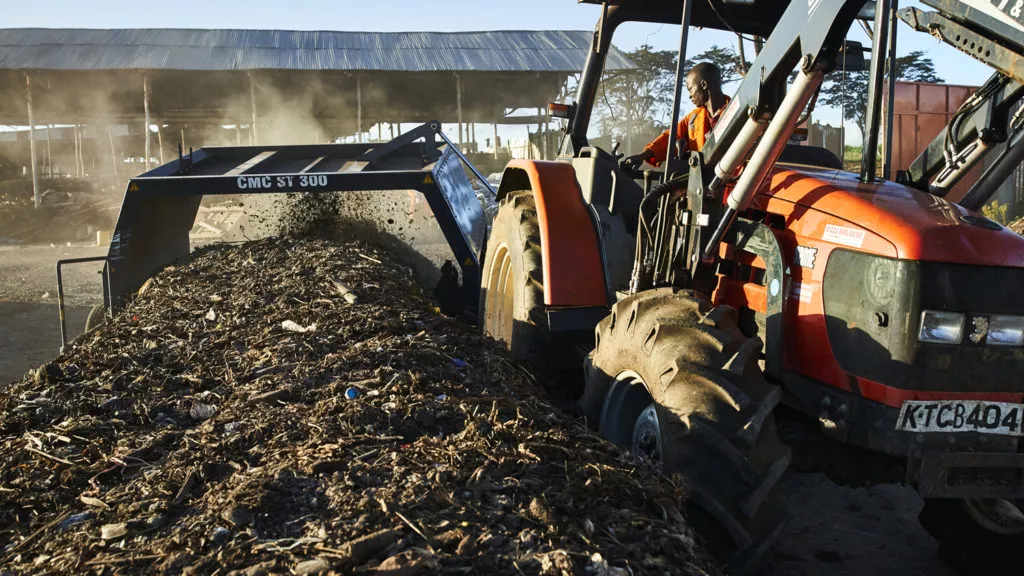
Moses Nyoro, Director, Food Banking Kenya (FBK) admits there is a lot of food loss and waste along the entire supply chain. It starts from farmers, to distributors, retailers even to consumers in the households.
Nyoro discloses that FBK collects 60 tons per month of food which otherwise could have gone to waste. People now understand there is an organization that collects food from families with excess of it.
According to Nyoro, the information on food recovery has spread far and wide and people are realizing the importance of avoiding food wastage. In fact, it has helped in reducing food waste found in dumpsites, litter bins among other garbage areas known as waste yards.
Nyoro reveals that statistics show a lot of gases being emitted into the atmosphere is specifically from Agriculture wastage. So, the element of connecting with agriculture stakeholders and networking or collaborating with other recycler companies to ensure food recovery is very important.

